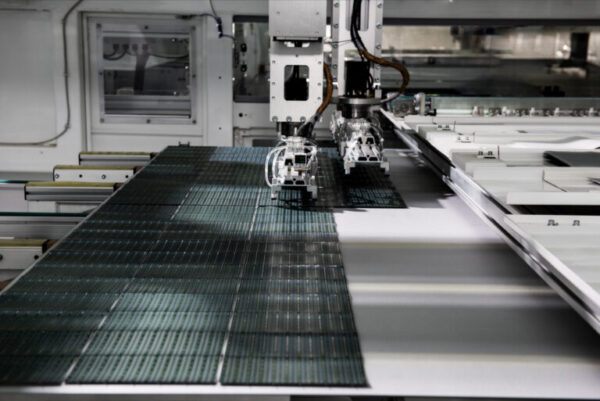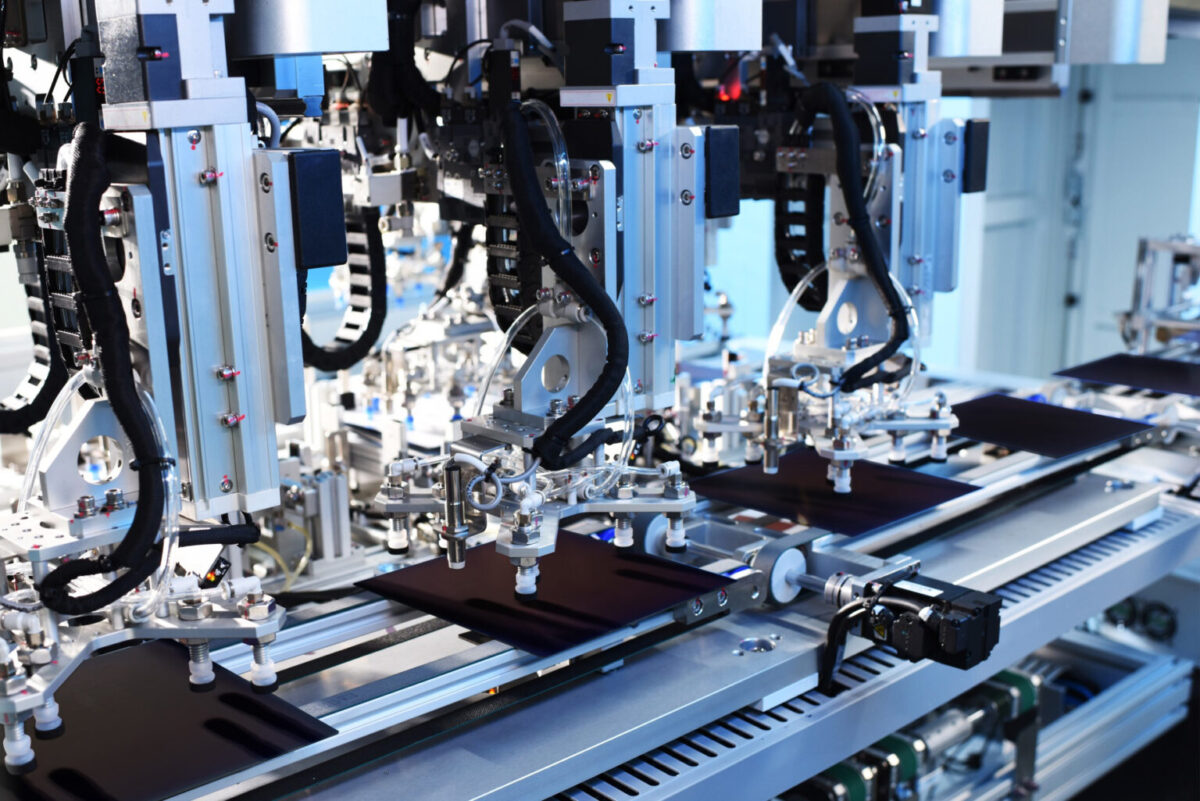For a long time, solar cell efficiency gains have been the main means of improving module output power not only as an important performance attribute, but also as a sales metric.
Higher module efficiency reduces the balance of system (BOS) costs, thus reducing the overall final PV system costs. After commercializing various cell technologies, leading PV manufacturers now are once again moving back to putting most or all contact elements on the rear of the cell – but now using advanced cell architectures.
These new architectures don’t just boost the efficiency and power output of solar modules, they also result in system-level advantages ─ such as better low light response, temperature coefficient, and degradation rates ─ that increase the energy yield. Every technology advancement that boosts efficiency helps reduce the final levelized cost of electricity generation (LCOE), making solar energy more cost competitive.
All roads lead to back contact cells
High efficiency led the move from traditional back surface field (BSF) cell technology to PERC and other cell types, while TOPCon is currently the technology of choice in the mainstream. However, back contact cell architecture has consistently proven its worth in terms of efficiency.
The underlying principle of back contact technology is the placement of the positive and negative contacts on the backside of the cell, which provides numerous benefits. With both contacts at the rear, the front surface remains unobstructed, maximizing both the cell’s exposure to sunlight and its light absorption. This structure minimizes the surface area where recombination can occur, leading to improved electron flow and increased efficiency. Variants of this technology include Emitter Wrap-Through (EWT), Metal Wrap-Through (MWT) ─ where only the busbar is placed at the rear ─ and Interdigitated Back Contact cells (IBC).
Of the above, IBC is the most promising. In 2022, the most efficient commercial IBC solar module first achieved the 23% efficiency level, and a back-contact based solar module made in China recently even reached the 24% level. In both cases, the module was manufactured by AIKO.
IBC operates on the principle that the charge carriers generated near the front surface can still be collected at the rear side of the cell. The resulting benefits, in short, are:
- While the front emitter of a solar cell contacted on both sides has to balance the competing demands for low surface recombination, low lateral transport losses, and low contact recombination, a dense placement of alternating p- and n-contacts at the rear side can obviate these competing demands to a certain extent.
- Passivating contacts of both polarities can be implemented at the rear side, thereby avoiding additional and significant parasitic absorption losses, which occur in solar cells featuring passivating contacts at the front.
- The resistive losses caused by the metal grid can be virtually eliminated without impairing the optics of the solar cell.
Creating alternating regions on the rear side with n- and p-doping is the most critical part of realizing IBC. Depending on the emitter doping type, n- or p-passivation materials can be selected ─ such as silicon nitride for the n-surface and aluminum oxide or silicon oxide for the p-surface.
Back contact solar cell technology isn’t new. It was invented in the late-1970s, but it took until the first decade of this century until it was commercialized. Advancements in materials and manufacturing processes have allowed for noteworthy gains in the efficiency levels of IBC cells. Over the last few years, there’s been a significant uptick in the number of companies that have mastered this technology. Among the four most efficient solar modules, three are based on back contact cell technology, and all of them have at least 23% module efficiency.
It is noteworthy that the IBC structure can be adapted to either p-type or n-type wafers and can even be implemented onto different cell architectures, such as TOPCon or HJT. However, the best commercial cell efficiencies so far have been attained by combining the back contact layout with the n-type TOPCon architecture – the approach AIKO has chosen to follow. In its recent World Energy Investment 2023 report, the International Energy Agency (IEA) states that n-type cells will lead the market by 2033. AIKO calls its current technology ABC, which stands for ”all back contact,” and has attained mass production efficiency of 26.5% for its cells.
AIKO began developing its ABC cell architecture in 2021. This marked a turning point that enabled the company to venture into module-making, and ultimately, to evolve into a one-stop solution provider for downstream customers. Building on this achievement, in 2022, AIKO launched its first-generation ABC module with an efficiency of 23.6%, which has now increased to 24% as announced in 2023.

Mastering back contact technology
The key to mastering IBC technology is interdigitated doping of the solar cell. AIKO developed a procedure to isolate and fabricate the interdigitated carrier-selective collector regions to maximize high minority carrier lifetime, and it mastered the rear surface passivation, handling the presence of the opposite polarities of dopants on the backside of the solar cell. The approach safeguards efficiency while also simplifying an otherwise complex and costly process. Another significant cost reduction step taken by AIKO is to employ copper for the cell’s metallization, instead of the more expensive silver common to most other cell technologies.
The back contact structure also presents a unique interconnection opportunity. Since the contacts of both polarities lie on the same side, the ribbons don’t have to be connected from the back of one cell to the front of the next; they can run straight, which avoids bending and allows the cells to be densely packed, improving the utilization rate of the module area.
The superior attributes of back contact architecture include high power density, which reduces costs associated with mounting hardware, cabling, and labor ─ contributing to a cut of about 7% in BOS costs. A temperature coefficient of -0.26%/℃ adds to gains in the power yield. While less efficient solar modules are offered with 25-year performance warranties, there is no one offering back contact cell-based modules with performance warranties under 30 years.
A solar panel built with back contact cells comes with a very uniform look, undisturbed by front contacts, especially when complemented with a black backsheet and black frame. This makes the product highly valued in residential applications. However, the technology can be adapted to all mainstream applications. For example, AIKO currently has in its portfolio four products for residential applications, four for C&I, and one for utility-scale power plants. The residential products are available in dual glass and single glass configurations and are offered in two variants: the black series, which the company says has superior aesthetics, and the white series with higher output power. Within the C&I series, products include glass backsheet modules in both black and white variants, a dual-glass product, and a lightweight module. The company’s 72-cell dual-glass bifacial modules are part of its utility product portfolio.
The Intersolar AWARD 2023 honored AIKO’s achievements for designing the world’s most efficient commercial solar module using back contact cell technology. With the top module efficiencies relying on back contact cells, moving backwards has meant a big leap forward, demonstrating that solar cell technology roads will likely lead to back contacts.
The views and opinions expressed in this article are the author’s own, and do not necessarily reflect those held by pv magazine.
This content is protected by copyright and may not be reused. If you want to cooperate with us and would like to reuse some of our content, please contact: editors@pv-magazine.com.








By submitting this form you agree to pv magazine using your data for the purposes of publishing your comment.
Your personal data will only be disclosed or otherwise transmitted to third parties for the purposes of spam filtering or if this is necessary for technical maintenance of the website. Any other transfer to third parties will not take place unless this is justified on the basis of applicable data protection regulations or if pv magazine is legally obliged to do so.
You may revoke this consent at any time with effect for the future, in which case your personal data will be deleted immediately. Otherwise, your data will be deleted if pv magazine has processed your request or the purpose of data storage is fulfilled.
Further information on data privacy can be found in our Data Protection Policy.